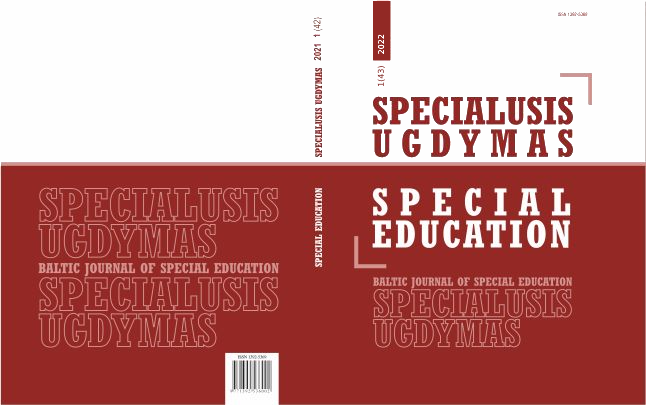Augmentative Communication Systems as an Educational Alternative to the Autism Spectrum Disorders
Main Article Content
Abstract
Background: While circa one-third of persons diagnosed with an autism spectrum disorder will not develop functional natural speech by adulthood, augmentative communication systems, referred as an integrated group of symbols, aids, strategies, and techniques used by individuals to enhance communication, might be considered as a viable methodology for offering an alternative means of communication for individuals with autism spectrum disorders
Objectives: The purpose of the current research is to explore the representation of the autism spectrum disorders (ASD) as a nosology in which the reference parameter for determining gravity is related to the demand for continued support from the environment and especially from the development of innovative techniques of interdisciplinary treatment. Another equally important goal in this work is the exploration and analysis of the Alternative Communication Approach (AAC) and the Universal Design Learning Models (UDLA) that aim at improving the communication processes of subjects with low cognitive functionality for a multi-parametric intervention in the development of psycho-cognitive and social skills in ASD subjects.
Methods: The method design was of A-B-A typology, with assessment of baseline levels (A1), measurement of skills after the end of the training (B) and six months after its end (A2). The comparison between the two groups, conducted through the Vineland Adaptive Scales (VABS), highlights a significant increase in adaptive and communicative skills in the Experimental Group alone, confirmed by the regression towards baseline scores in phase A2. The current study evaluates the effectiveness of a structured training of AAC for the increase of adaptive skills in a sample of young adolescents with autism spectrum disorders belonging to a specialized educational service (N = 8; range: 10-15; average age 10 years old). Participants were assigned with randomization to the Control Group (N = 4) or to the Experimental Group (N = 4). The Experimental Group followed an individual AAC and UDLA training for one year, and the Control Group followed the normal educational activity of the service with the association of an assistant teacher
Results of the current research demonstrate the effectiveness of a structured AAC training for the increase in communicative and adaptive behaviors (IRD= 0.90) of children with autism spectrum disorders and low cognitive function (IRD= 0.99) associated to the ASD 3rd level of gravity children. Indices of the overall scores lower than the average of the normative sample were observed in the Communication Scale of VABS (94.50 Control vs. 96.50 Experimental group), low scores on the Socialization Scale (93.50 Control vs. 91.50 Experimental group) and markedly lower scores were recorded in the Social Gaming subscales (Control Group Average = 85.50; Experimental Group Average = 85.25).Other significant indices of the follow-up phase revealed a significance for Expression (p = .040), Writing (p = .052), Game (p = .039) and Social Rules (p = .056) after the training phase.
Conclusions: Prototype displaying subjects, the systematic and combined use of AAC and UDLA training techniques for improving communication skills improve the contextual and environmental context in responding to the needs of a continuous education in subjects of ASD with intellectual disabilities.
